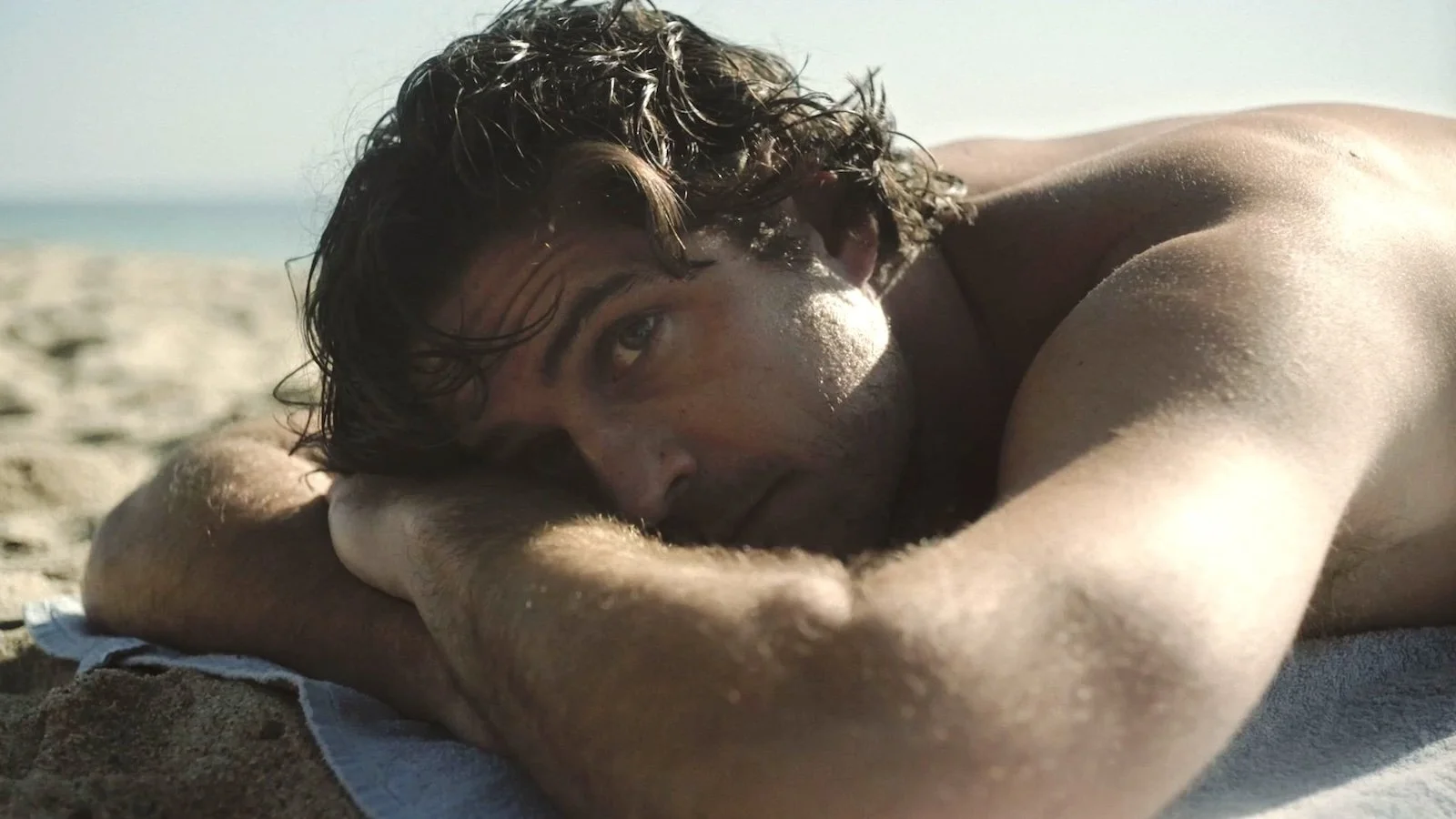Writer/director Marco Calvani does have a visual style that is much more mature than his script. His visual acuity is quite dynamic. When Maurice and Lourenço are having a conversation at night on the beach, Calvani and cinematographer Oscar Ignacio Jiménez focus tightly on their faces. It is there we see these two men becoming more attracted to each other. Their smiles are bright and their faces crinkle with joy.
Later, as Lourenço sits at a dinner with his landlord Scott (Bill Irwin) and Todd (Bryan Batt), a lawyer friend of Scott's, there is a conversation that clicks on Lourenço's face. He realizes this is what Maurice had been trying to tell him during their earlier dinner. Todd is on one side of the frame arguing against adding more identities to LGBTQ+ community and Scott, who means well but has no real heart for the argument, is on the other side of the frame. Slowly the camera pushes in on Lourenço who is seated in between the two men. It shows on Lourenço's face as he takes in Todd marginalizing the margins of his own marginalized community.
In another scene after that, as Lourenço thinks about how he left things with Maurice, Maurice appears. The camera starts on Lourenço and moves with him, turning as he joins Maurice in the middle of the road. The camera slowly spins around the two of them, and then as Maurice breaks off the embrace they share, the camera moves backward as it follows Maurice's exit.
There are many moves like that through the film that show the assurance of the filmmakers. There are also wonderful choices made by editor Anisha Acharya. She helps to add context through some insert scenes. She cuts smoothly and elevates the material.
It is disappointing that none of the scenes that are meant to have emotional heft carry the weight they are supposed to. There is something stilted. Something is missing from the film. Some of the performances feel like they did not have time to breathe. Even when the action lingers on a scene just a little too long, it feels like the moment never lands. There’s just an indescribable piece missing that makes it too hard to connect with the characters.

